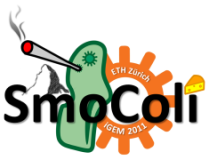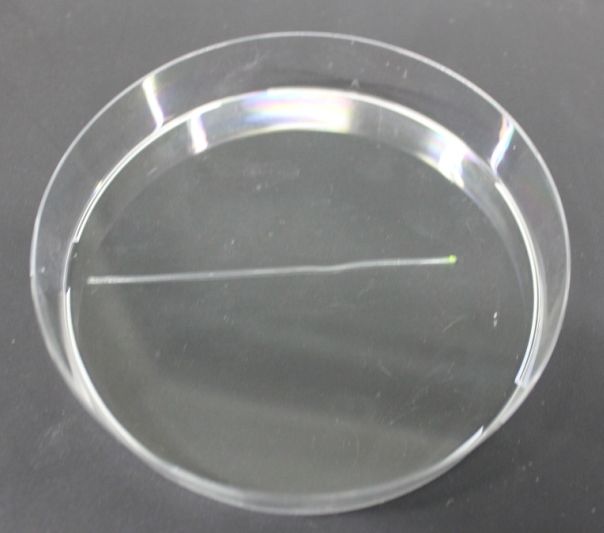Team:ETH Zurich/Process/Microfluidics
From 2011.igem.org
(Difference between revisions)
(→Microfluidic channel with flow and recycling of the medium) |
(→Microfluidic channel with flow and recycling of the medium) |
||
| Line 19: | Line 19: | ||
We came up with two different possible microfluidic channel designs, both involving a flow of toxic molecule in medium through the channel: | We came up with two different possible microfluidic channel designs, both involving a flow of toxic molecule in medium through the channel: | ||
| - | * '''Variant 1: Plate with cells-in-agarose-filled cubic "pixels" and a microfluidic channel above. '''This channel design consists of two parts: A PDMS plate with regular cubic "pixels" that is filled with cells in agarose by letting the liquid cell-agarose solution flow over the pixels by gravity. The cell-agarose liquid is then cooled down and the solidified surplus cell-agarose gel scraped off. The second part is a larger PDMS channel, which is several pixels wide and several pixels high. It is then laid on top of the pixel structure and clamped tightly in order to create seal. | + | * '''Variant 1: Plate with cells-in-agarose-filled cubic "pixels" and a microfluidic channel above. '''This channel design consists of two parts: A PDMS plate with regular cubic "pixels" that is filled with cells in agarose by letting the liquid cell-agarose solution flow over the pixels by gravity. The cell-agarose liquid is then cooled down and the solidified surplus cell-agarose gel scraped off. The second part is a larger PDMS channel, which is several pixels wide and several pixels high. It is then laid on top of the pixel structure and clamped tightly in order to create seal. Though this setup is rather complex, it has the advantage of having immobilized cells, i.e. we could vary flow speeds or even put aerosol in the channel without the cells being washed out. |
{|style="border: none;" align="center" | {|style="border: none;" align="center" | ||
|valign="top"|[[File:flowchannel_pixel.png|500px|center|thumb|'''Experimental setup for SmoColi.''' ]] | |valign="top"|[[File:flowchannel_pixel.png|500px|center|thumb|'''Experimental setup for SmoColi.''' ]] | ||
Revision as of 01:41, 22 September 2011
| Microfluidics |
| ||
|
We relatively early figured out that we need a some kind of channel to establish the acetaldehyde or xylene gradient needed for SmoColi (see Circuit Design). However, there were several different channel designs possible, and the final design evolved through an iterative series of design steps and design validations. The first designs were validated based on vast simulations, the final design furthermore by biological experiments in the lab (see Systems Validation). | |||
First Channel DesignsMicrofluidic channel with flow and recycling of the mediumWe came up with two different possible microfluidic channel designs, both involving a flow of toxic molecule in medium through the channel:
|
 "
"





